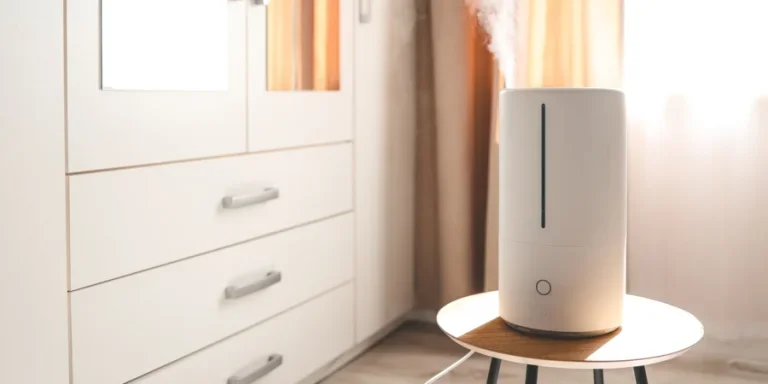Humidifiers are indispensable in preserving ideal indoor air quality, particularly as companies and homes look for improved ways to provide comfort and health. Today’s models are made more efficient, adaptable, and safe, fulfilling the particular needs of different surroundings thanks to developments in humidifier technology. With its sophisticated controls, automatic humidity adjustments, and increased safety, the most recent developments let humidifiers fit well into contemporary environments.
Professional purchasers who want to satisfy customer needs properly must understand current industry trends and technical innovations. This guide investigates the product range, humidifier market environment, and main factors influencing the choice of the best humidifier model.
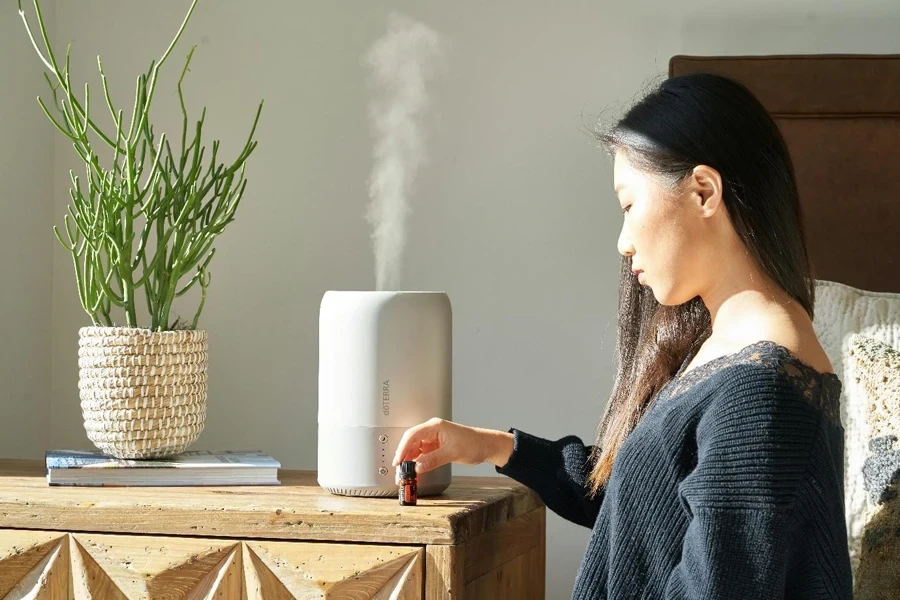
Table of Contents
● Understanding the humidifier market
● Types of humidifiers and their unique features
● Key considerations when buying a humidifier
● Conclusion
Understanding the humidifier market

Market scale and projected growth
Future Market Insights estimates that the worldwide humidifier market is valued at about $3.36 billion and is expected to rise at a CAGR of 5.9%. By 2033, this value will reach almost $5.74 billion. Growing knowledge of indoor air quality and the growing desire for energy-efficient, smart home-compatible gadgets drive this development. The market is gradually increasing, and the health advantages of keeping ideal indoor humidity levels attract the interest of domestic and business sectors.
Regional market leaders and trends
Taking a 27.1% share in 2022, the United States tops the world in humidifiers. Rising health issues, frigid temperatures, and government-supported projects aiming at better indoor air quality drive this domination. While Japan’s humidifier market is developing through tech-driven developments like IoT-enabled models, countries like Germany and Europe are experiencing rising acceptance of ultrasonic humidifiers because of their silent operation and energy efficiency. As consumers prioritize home wellness, emerging markets in China and India are seeing explosive expansion with expected CAGRs of 13.6% and 16.2%, respectively.
Key drivers and innovations
The growing need for air purification and consumer inclination for new technologies improving safety and efficiency fuel the rise in the humidifier industry. Recent developments include variable mist settings that react to environmental changes, LED nightlights, and smart humidifiers that operate autonomously. Future Market Insights says these qualities, together with environmentally friendly materials and energy-saving designs, are turning humidifiers into indispensable equipment for tech-savvy and health-conscious consumers.
Types of humidifiers and their unique features
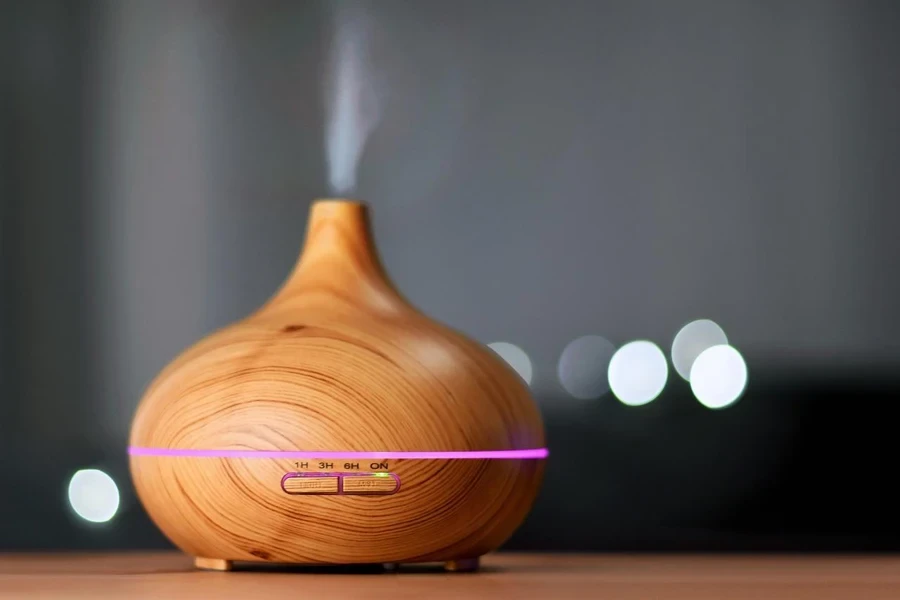
Cool mist humidifiers
Cool mist humidifiers create a cool vapor for warmer climates by moving air over a moistened wick using an internal fan. Usually using HEPA or activated carbon filters to catch particles as fine as 0.3 microns, these models efficiently remove dust, pollen, and bacteria before the vapor diffuses. The fan speed can vary from 1,000 to 2,500 RPM depending on model characteristics, enabling exact control over humidity levels. Many cool mist models have ultra-fine nozzles with micro-droplet technology that lowers water particle size to less than 5 microns, improving mist efficiency without changing room temperature. Standard water tank capacity runs from 1 to 3 liters, allowing 8 to 16 hours of constant operation.
Warm mist humidifiers
Perfect for cooler conditions, warm mist humidifiers heat water to 100°C using a boiling chamber, generating a warm vapor free from bacteria and mold spores. Usually running on ceramic heating elements or dual-coil systems, they heat water in seconds and produce output mist with temperatures between 40 and 45°C upon release. Without a fan, these units emit sound levels as low as 30 dB, perfect for peaceful surroundings. Many models have a sterilizing cycle, whereby water is boiled for many minutes before mist generation starts, guaranteeing optimum germ removal. A common tank capacity of 3 to 5 liters provides up to 24 hours of use for each fill. However, they consume 50 to 200 watts more than cool mist types.
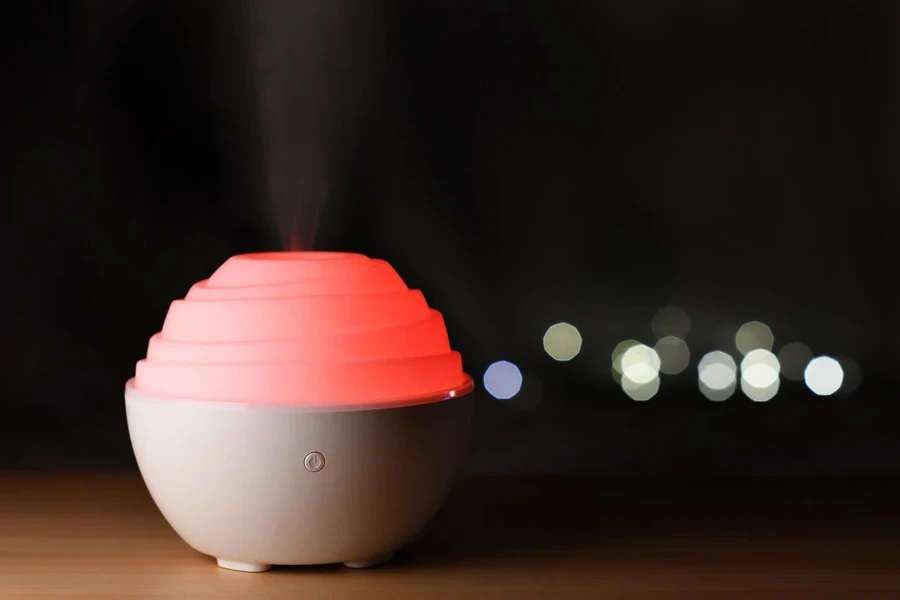
Evaporative humidifiers
A wick filter composed of porous materials like cellulose or foam drives water from the tank and allows evaporation through airflow in evaporative humidifiers. These units self-regulate by varying the moisture release rate in response to room humidity; evaporation slows down as humidity approaches 60%, preventing over-humidification. Usually running from 600 to 1,500 RPM, models include variable-speed fans that help manage moisture production across varying room sizes. These units are effective for bigger areas since their humidity output rate falls between 0.5 and 1 gallon per hour. Theirsign also reduce mineral dust since dissolved minerals stay on the wick.
Vaporizer humidifiers
Using piezoelectric disks to generate ultra-fine mist or steam for regulated humidity levels, vaporizer humidifiers—versatile in both cool and warm mist modes—create Whereas in warm mode, internal heating components boil the water to generate steam, in cool mode, they emit mist at roughly 0.25 to 0.5 gallons per hour using ultrasonic vibrations. Many times featuring built-in safety measures, including automatic shut-off and tip-over prevention, these humidifiers include digital humidistats with humidity level adjustments ranging from 30% to 70% RH. Vaporizers run continuously for up to 20 hours using 2 to 4-liter tanks, although heating demands cause them to consume up to 300 watts on warm settings.
Ultrasonic humidifiers
Ceramic or metal ultrasonic diaphragms vibrating at frequencies between 1.7 and 2.4 MHz power ultrasonic humidifiers, which finely mist water. Small particle sizes as low as 1 micron, made possible by this technology, produce an almost undetectable mist that readily diffuses into the air. Many types incorporate digital control panels, including water quality indicators, auto-timers, and programmable humidity settings. These especially energy-efficient humidifiers run between 30 and 60 watts. Some high-end versions are chosen for settings that call for constant quiet operation and exact humidity management since they have hygrometers and UV-C light filtration, which helps lower bacterial development.
Key considerations when buying a humidifier
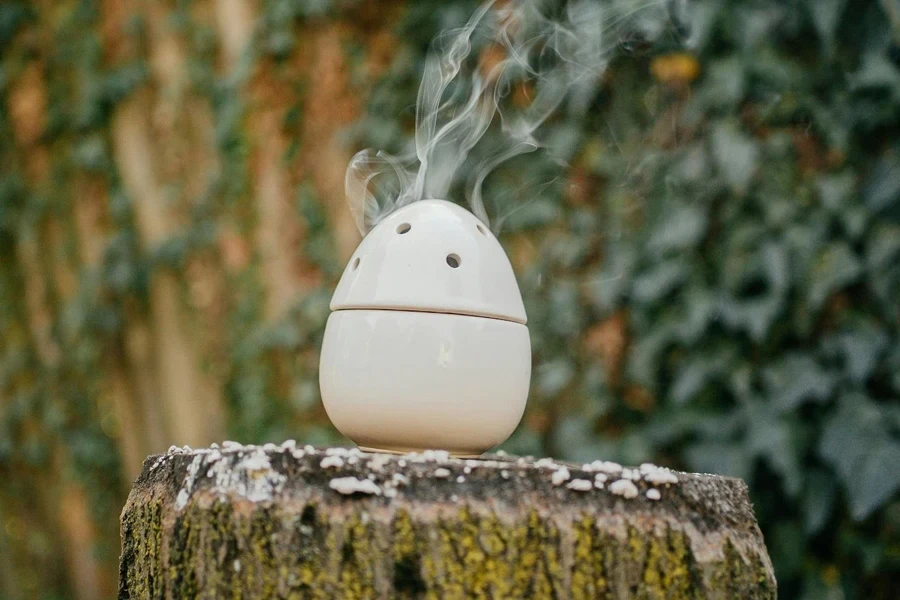
Room size and type
Selecting the right humidifier size for a room guarantees good control of air quality and moisture production. Small bedrooms or home offices would find tabletop humidifiers, with outputs ranging from 0.25 to 0.5 gallons per hour, perfect in rooms up to 300 square feet. Console humidifiers with 1 to 2 gallons per hour can cover up to 1,000 square feet for bigger areas or open-plan designs. Though they may require professional setup and maintenance, whole-house humidifiers—often coupled with HVAC systems—are advised for entire residences.
Noise level
Noise level is important, especially in offices or bedrooms where low sound levels are desired. Usually the quietest choice, ultrasonic humidifiers produce roughly 30 to 35 decibels via their vibration-based mist generation. They are, therefore, appropriate for settings sensitive to noise. Some people find comfort in the quiet white noise produced by evaporative models—which use fan-driven systems. Though generally more peaceful than evaporative models, warm mist humidifiers can generate a low hissing sound when heating water, a factor for shared or quiet areas.
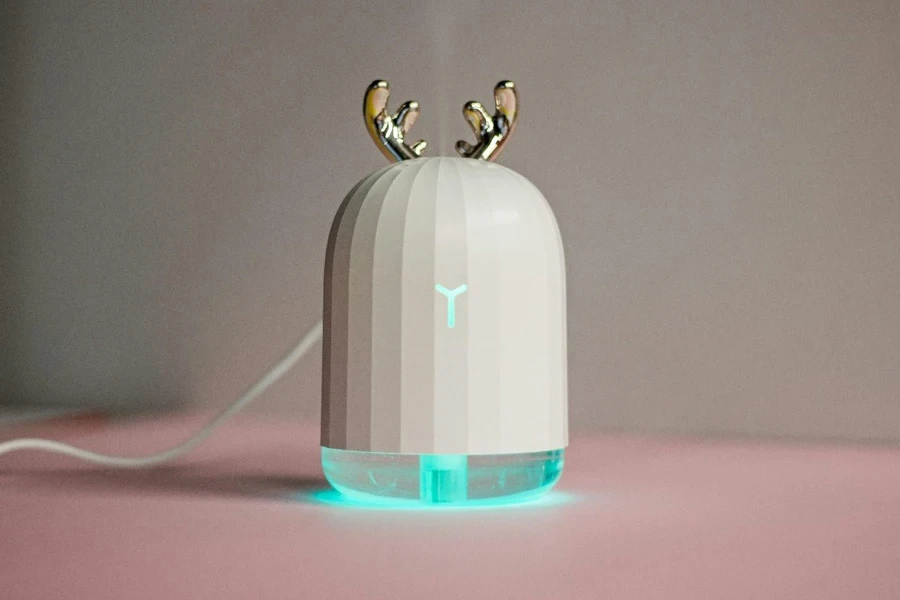
Maintenance needs
Hygiene and functional effectiveness depend on keeping a humidifier running. In hard-water environments, evaporative versions need frequent filter replacements every one to three months. Using distilled water or demineralization cartridges helps ultrasonic and warm mist models—which can generate mineral deposits—avoid white dust accumulation. Most manufacturers advise weekly tank and component cleaning to stop bacterial growth; some versions have self-cleaning capabilities for extra convenience. Regular maintenance schedules guarantee efficient performance and help to lower the allergy risk.
Energy efficiency and cost
Different kinds of humidifiers use somewhat different amounts of energy. Operating between 30 to 60 watts per hour, ultrasonic and cool mist types are frequently the most energy-efficient. With their fan systems, evaporative models—which average up to 100 watts—eat somewhat more energy. Although warm mist humidifiers effectively provide high moisture levels, their heating elements cause them to require 200–400 watts per hour, making them more energy-intensive. Cost-wise, cool mist and ultrasonic humidifiers usually have lower upfront prices; warm mist and advanced multi-functional devices may vary higher depending on extra heating or filtration capabilities.
Additional features
Modern humidifiers provide a range of capabilities to improve user flexibility and convenience. Most versions include a basic safety function called auto shut-off, which stops the machine from running empty-tipped. Digital humidistats are perfect for effective energy consumption and preserving suitable indoor levels, which allow for exact humidity management. Some humidifiers have remote controls, smart connectivity, and programmable timers for convenience so that one may easily regulate settings far away. Other handy tools include nightlights, quiet modes, and adjustable mist levels—which let users match the humidifier’s running to different room conditions and preferences.
Conclusion
Choosing the correct humidifier depends on closely assessing space needs, maintenance requirements, energy usage, and financial situation. Businesses and homes can guarantee the best humidity control by matching the capacity and features of the humidifier to certain room sizes and environmental circumstances. An indispensable purchase in a better, more balanced atmosphere, a well-selected humidifier improves interior comfort, supports respiratory health, and protects priceless assets.
